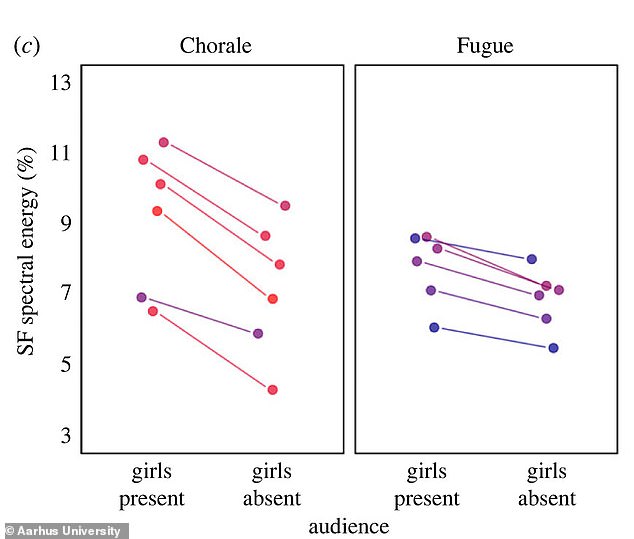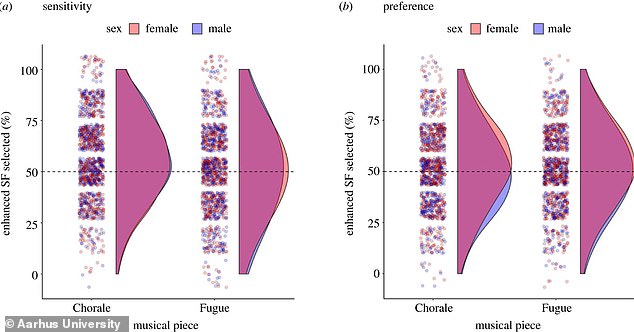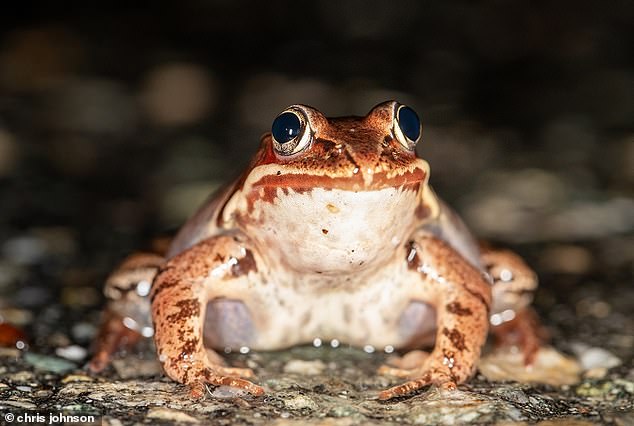Talk about singing with heart and soul! Male singers amplify their singing when they see women in the audience, research shows
Crickets and frogs are known to try to outdo or croak each other in an attempt to attract the attention of females.
But it turns out the same can be true for people.
That’s because new research shows that male choristers boost their singing when they see women in the audience.
Recordings of an elite boys’ choir once led by Johann Sebastian Bach in Leipzig, Germany, were analyzed by experts at Aarhus University in Denmark, as well as institutes in Australia, Italy and Germany.
They discovered that the more physically mature boys in the group sang with more enthusiasm when girls were watching, as opposed to when the audience was all male.
New research shows that male choristers boost their singing when they see women in the audience. In the photo: Italian opera tenor Luciano Pavarotti

Higher energy: The older choristers changed the way they sang to “add an attractive ringing tone to the voice,” the researchers said (pictured), which is similar to how frogs and crickets behave during sex
The older choristers changed the way they sang to “add an attractive tonal quality to the voice,” the researchers said, which is similar to how frogs and crickets behave during sex.
The creatures use a technique known as collective broadcasting, in which they work together to coordinate their beeps and croaks in a chorus to attract females.
Once they arrive, the males compete with each other in croaking and chirping stakes to be seen as the most desirable.
The experts involved in the new study think a similar approach to group singing may have evolved in humans as a way for males to work together to attract females, before they too competed to project their voices.
That does not mean singing louder – because that would destroy the harmony in the choir – but rather with more clarity.
“The end result is a brilliant tonal quality of the voice, allowing it to reach further,” said lead author Dr. Peter Keller.
It’s also evidence that cooperation and competitiveness can coexist, the researchers added, in that the group of singers work together to attract women, but also try to make themselves most attractive to a prospective partner.
“Human chorusing is a flexible form of social-communicative behavior that enables simultaneous group cohesion and sexually motivated competition,” they said.
The findings could also help explain why Pavarotti was such a ladies’ man.
According to the researchers, the combination of low voices in the high frequency band of the voice spectrum – known as the ‘singer formant’ – makes a person’s voice sound more attractive..
The reason, Dr. Keller explains, is that “low voices are perceived as dominant, powerful, and attractive,” while human hearing is particularly sensitive to frequencies in the singer’s formant range.

The findings could also help explain why Pavarotti was such a ladies’ man. According to the researchers, the combination of low voices in the high frequency band of the voice spectrum – known as the ‘singer formant’ – makes a person’s voice sound more attractive.

Similarities: Crickets and frogs are known to try to outdo each other in an attempt to attract the attention of females (stock image)
“So the bass might produce the best of both worlds from a female listener’s perspective,” he added.
In the study, recordings of the St. Thomas Choir for two audiences – one for men only and the other with women watching – were played to 679 women and 481 men.
One of the things the researchers wanted to see was… if women preferred the operatic, echoing sound of some male voices.
They found that 53 percent did so – which, while not a huge majority, suggests it is more popular with women.
Men who asked about the same music fragments had no preference for opera singing.
Experts believe that the fact that you can sing this way suggests that you have a flexible, controlled voice, making it appear healthier overall.
Evolutionarily speaking, women prefer healthy-looking men as romantic prospects.
The research was published in the journal Biological letters.
